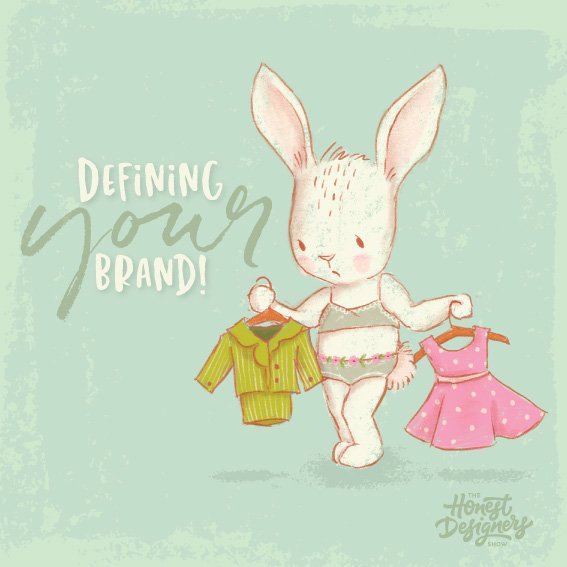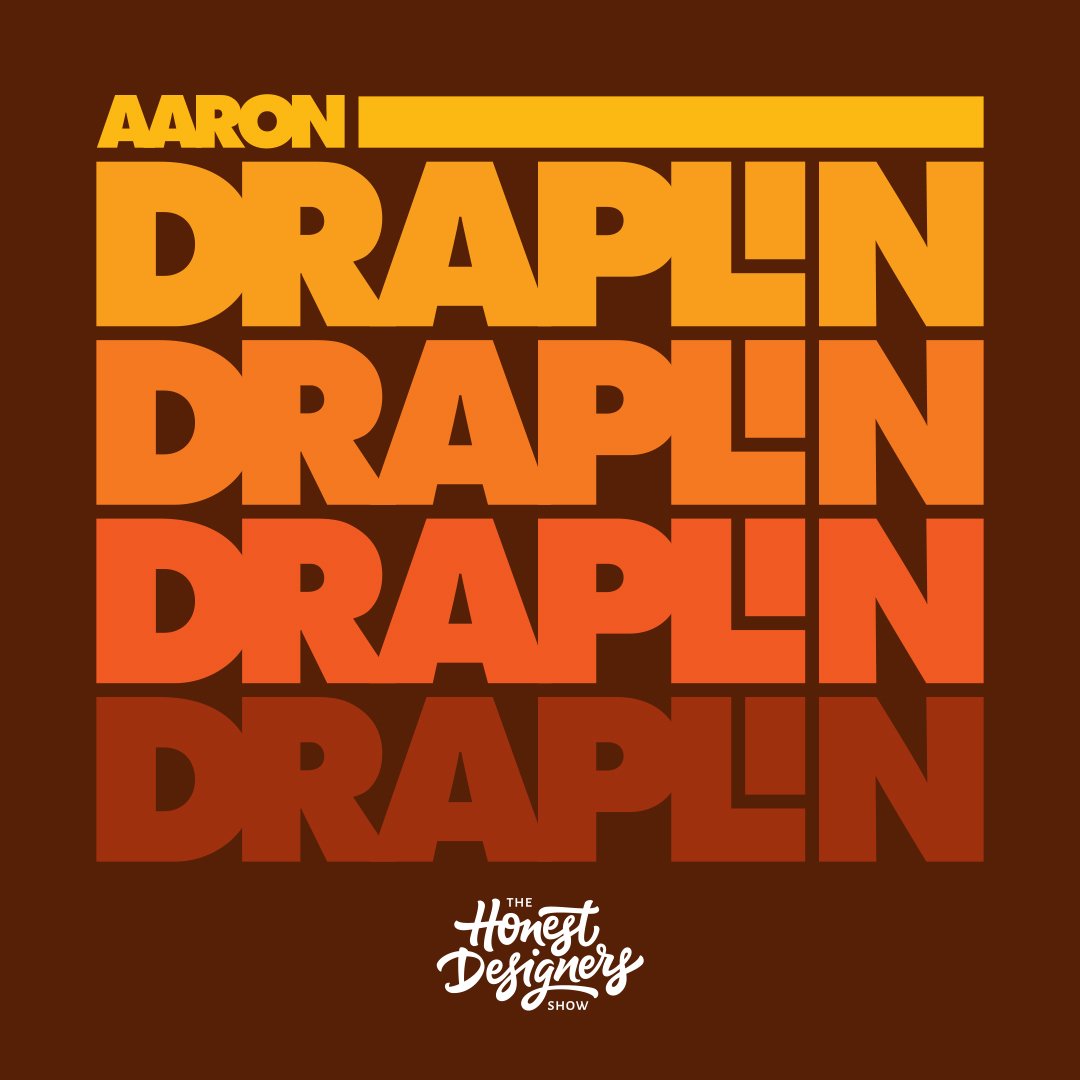In this week’s episode we talk about how to define your brand as a designer. If your brand is how the world perceives you, then defining it can involve some big questions and though decisions, however a solid brand can be a huge catalyst to success as a creative.
[smart_track_player url=”http://traffic.libsyn.com/honestdesigners/HD_57.mp3?dest-id=468740″ social=”true” social_twitter=”true” social_facebook=”true” social_gplus=”true” title=”Episode 57: Defining your Brand as a Designer”]
Watch more of the Honest Designers episodes here: Honest Designers Podcast Playlist And remember to subscribe to our YouTube channel for regular updates direct to your inbox.
Show Notes for This Episode:
[1:00] This week we talk about how to successfully brand yourself as a designer
[1:30] Branding yourself is not as easy as it is doing branding work for a client
[2:00] It also raises endless questions
[2:40] Branding is how people perceive you and talk about you
[3:10] Tom asks the hosts to define their brands
[3:40] Lisa jokes about presenting herself as an illustrator in the past and not going so smoothly
[3:55] Dustin is not very happy either with his historically inspired designs description
[4:10] Ian’s description: “I design, draw and talk about letters” – inspired by Joan Gorman
[4:50] You need multiple variations of your branding for different platforms
[5:50] Tom describes how he introduces Design Cuts to non-designers
[6:20] A short, clear description would help others understand what you’re doing
[7:10] Dustin’s mum still doesn’t understand what he does and she doesn’t listen to the podcast either
[7:40] Tom’s mum is a regular listener and she loves Lisa
[8:20] Lisa finds it much easier to visually describe what she does
[9:10] Tom gives a few examples of corporate brand guidelines
[9:40] Consistency leads to successful brands
[10:10] Designers will spend more time on their design work, but not so much on designing their brand
[10:30] Quality and care are at the heart of the Design Cuts brand
[11:40] Dustin lists everyone’s website description
[12:15] A lot of thought went into the descriptions
[12:50] Ian finds it very difficult to choose a single style for his logo
[13:40] Lisa admits she struggles with designing her logo too
[14:10] It’s been an entire journey getting to where the brands are now
[14:45] The name ‘Retro Supply’ describes what the brand is and what it does
[15:30] It’s very hard to brand yourself as you’re too close to the brand and you want to add it all in
[16:15] Dustin asked Chris DeLorenzo’s help to design his brand
[16:45] Ian feels it’s a bit like cheating to ask another designer to help when you’re capable of doing it yourself
[17:20] Ian admits he struggles with writing his name in a logo, especially with the capital letter ‘I’
[17:50] Ask someone who knows you very well to validate if your brand represents you
[18:40] You should feel excited about your logo and using it
[19:30] Dustin suggest Ian and another hand letterer should create each other’s logo
[20:20] You need to define your audience before you can get started on defining your brand
[21:20] Branding is very important, especially if you want to be taken seriously
[21:50] But firstly you will need a functional website that highlights your work
[22:20] Don’t spend too much time on your branding exercise
[23:20] Ian’s face and hands are his brand – especially on social
[24:40] Tom suggests Ian should add a great review on his website
[25:20] Think what you’re using your website for and create your brand accordingly
[26:00] A brand is ever-evolving
[26:45] Tom’s example of how the random ‘Google’ name became so famous that it turned into a verb
[27:40] Tom lists all the changes that took place with the Design Cuts brand over the years
[28:20] He explains how he came with name Design Cuts
[29:45] What are the designer’s struggles when branding themselves?
[30:40] “A successful brand does not make a business, but it will put a successful business on steroids” – Tom Ross
[31:10] All the work that comes before it, makes the brand possible
[31:50] Get something out whatever it is, as that might not be your final brand
[32:15] Just start by pick a font and writing your name – you can make changes later
[33:00] Give yourself time to know your clients and learn about yourself
[34:00] Focus on getting started and not on making your website and your logo pretty
[34:45] Lisa got a clearer image of what she should include on her website later in time
[35:50] Her website would be different if her initial design projects were successful
[36:10] Tom asks the hosts to describe their design style in one word
[36:20] Lisa: “supercalifragilisticexpialidocious”, Tom’s word for Lisa: “whimsical” and Ian’s word: “cute”
[37:30] Tom’s word for Dustin: “authentic”, Lisa’s word: “juicy” and Ian’s word: “nostalgia”
[38:40] Tom highlights the struggle the hosts are having with describing each other in on word and points out it should be difficult
[39:00] Exercise this by writing down a lot of names that describe your brand
[39:30] Some words might be strong enough to summarise your entire brand
[40:15] The worst thing is when you have no ideas and you’re inconsistent with your brand
[40:50] Dustin describes the Design Cuts brand from the point of view of someone that know us very well
[41:20] The importance of transferable brands
[41:50] The true authentic personality behind a brand can be transferred to another brand
[42:30] You will feel when you found a brand that fits
[43:00] The hosts would like to revisit this topic in a follow up episode
[43:30] Tom suggests using a guide to take you through the process of developing a brand
[44:10] Do for yourself what you do for your clients
[44:20] Thanks so much for listening to this week’s episode
“A must for every creative freelancer (or those aspiring to freelance). Thank you for being so… honest! Such a wealth of information from people I admire who have ‘been there and done that’. Listening to the podcast every week feels like I’m among friends. Can’t wait for more episodes!” – AG_GD






Loved this podcast! Branding is so darn hard & the insight given on this episode was fantastic. Dustin’s bit about historically-inspired & Tom’s quality & caring pretty much summed up the words I’ve been seeking to describe what I want my business to be. Right now I have vintage-inspired, which doesn’t quite fit because I use older ephemera than just vintage & my love of history often inspires me. All this leads me to a question…I would like to make my tag line a blending of the 2 bits: Historically-inspired quality printables along with inserting something about caring custom service. I don’t want to just take the words so I am asking if it’s ok that I use these words for my business.
This granny so enjoys listening to your podcast! Thanks!
Hi Teresa, thanks so much for getting in touch and for the great feedback on this episode. We like both the vintage inspired and historically-inspired quality printables descriptions, the only worry we have with the second one is that it should be a bit shorter and snappy, so that it is easily understood and remembered by your customers. And taking into account this, we would suggest not including the care bit into the description as this should come naturally from the way you engage with your customer and their experience with your brand. We hope this makes sense, but if you have any further questions or need any help with deciding on the final branding, please let us know ?